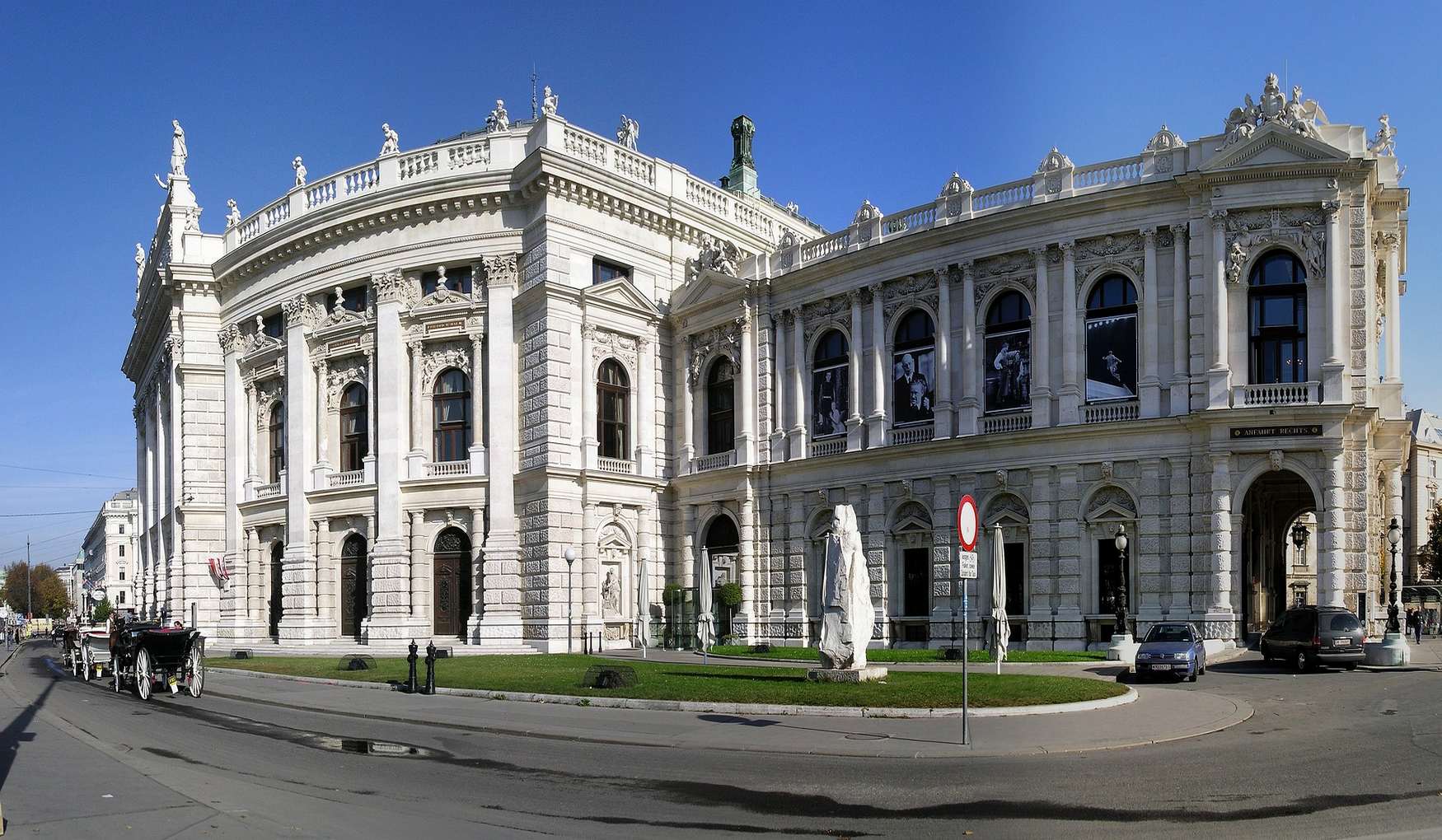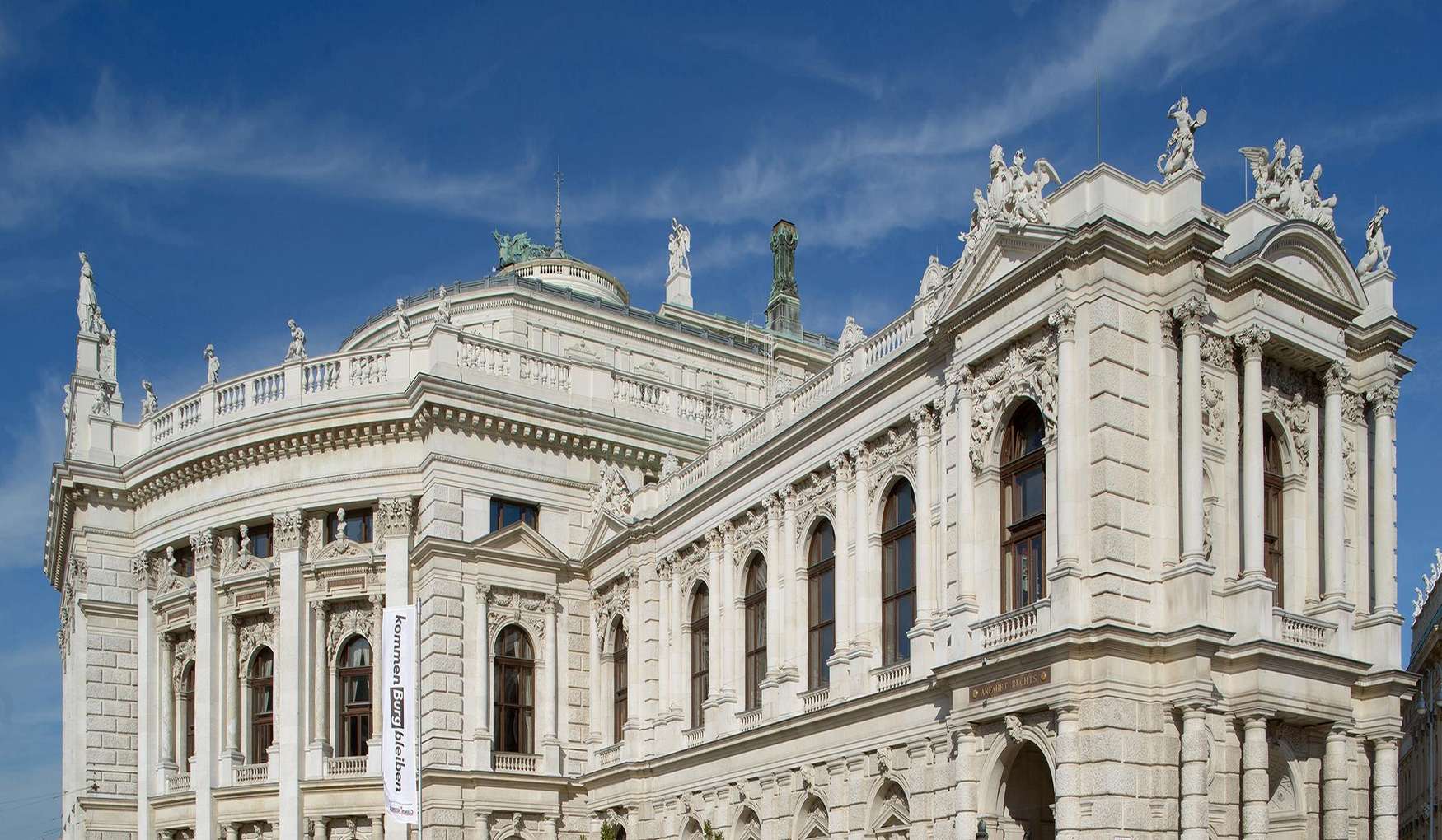In the heart of Vienna, next to the Hofburg, is the Burgtheater, Austria's oldest dramatic theatre. Once a court theatre, it is now the country's finest national stage. It would be an unforgivable mistake not to see it during a trip to Vienna, even from the outside.
The building delights audiences with its grandeur, the opulence of its interior and its repertoire. It is often compared to a ship. Perhaps this is because the huge white building, rising majestically from the bright crowns of the trees, bears a certain resemblance to an ocean liner.
This impression is reinforced by the interior, with its red corridors, massive staircases and crystal chandeliers. One cannot help but be reminded of the film 'Titanic', in which the corridors and rooms bear a striking resemblance to the interior of the ship.
The Vienna Burgtheater is separated from the palace by the Volksgarten, a perfect place for a family outing. So go to the theatre as a family, or take a guided tour if you want to go behind the scenes.
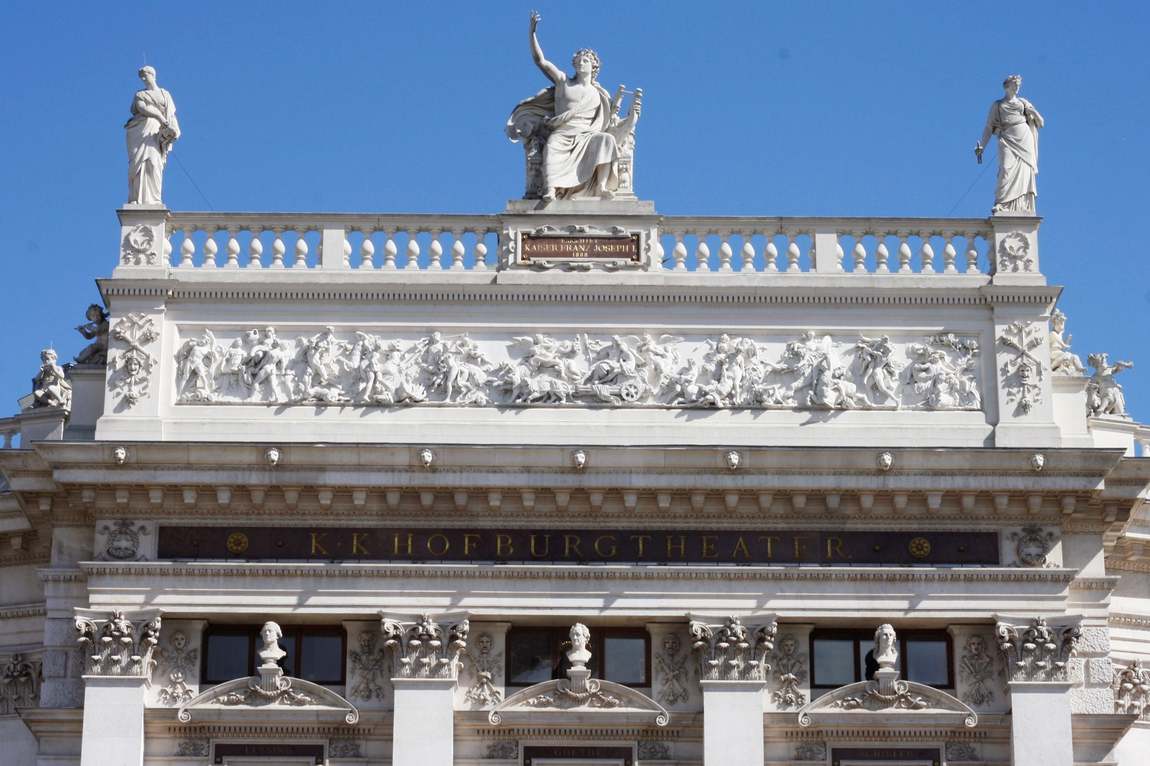
The History of Burgtheater
When looking at and visiting such sights, it is not unreasonable to learn about the history of their origins.
The Burgtheater in Vienna was founded in 1748 and was originally called the "Royal Palace Theatre". It was built as part of the Imperial Forum, designed by the famous architect Gottfried Semper at the behest of Franz Joseph.
The first version of the theatre was not on the same scale, but it hosted the premieres of famous operas such as The Marriage of Figaro and Così fan tutte. The first German-speaking company initially wrote its own plays. Ten years later, the theatre had only German actors.
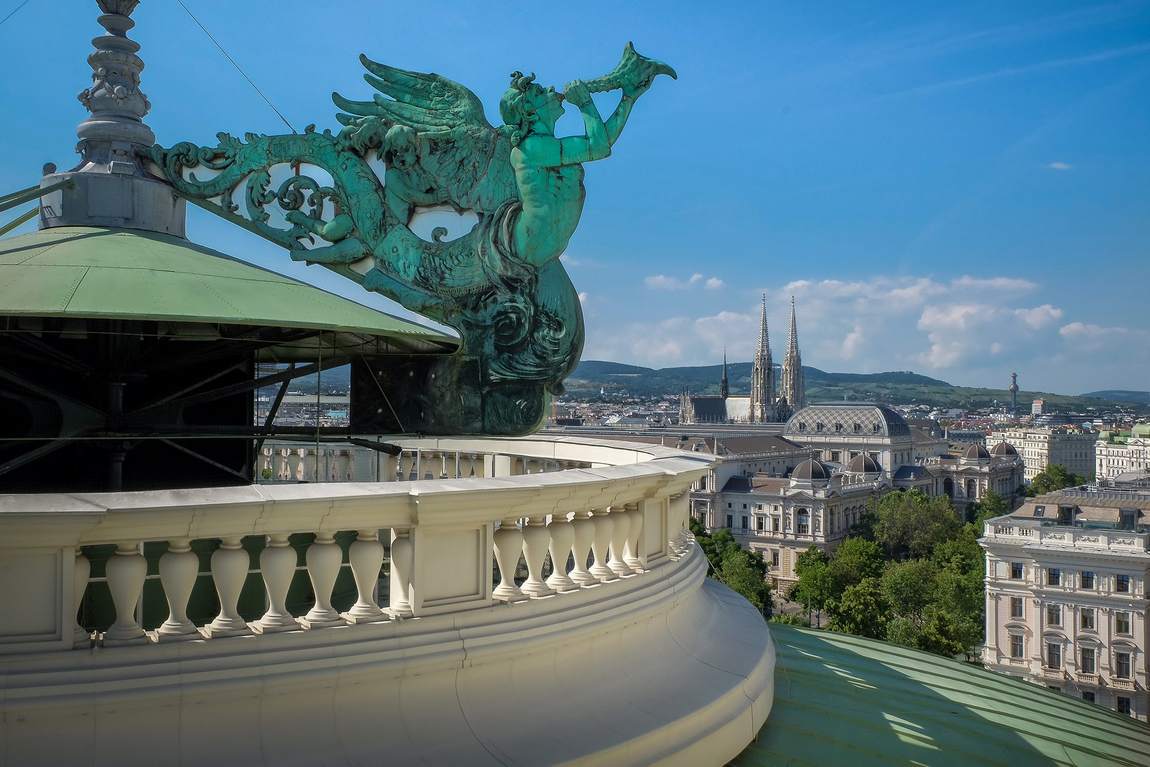
However, there was not enough space and an extension was needed. A new theatre was built in 1874-88. The main façade was semicircular, the attic was decorated with statues of the Muses and ancient gods, and the entrance portal was surrounded by a two-storey loggia.
It is interesting to note that the house was reopened in 1897, when the theatre was closed for renovation due to acoustic problems. And that, as you know, is one of the most important criteria for the great stage.
The theatre was partially destroyed by military operations and bombings and had to be rebuilt. The last reopening of the Wiener Bühne was in 1955. Russian classics such as Dostoyevsky's Crime and Punishment and Tolstoy's Anna Karenina were later staged here to great acclaim.
Interior and architecture
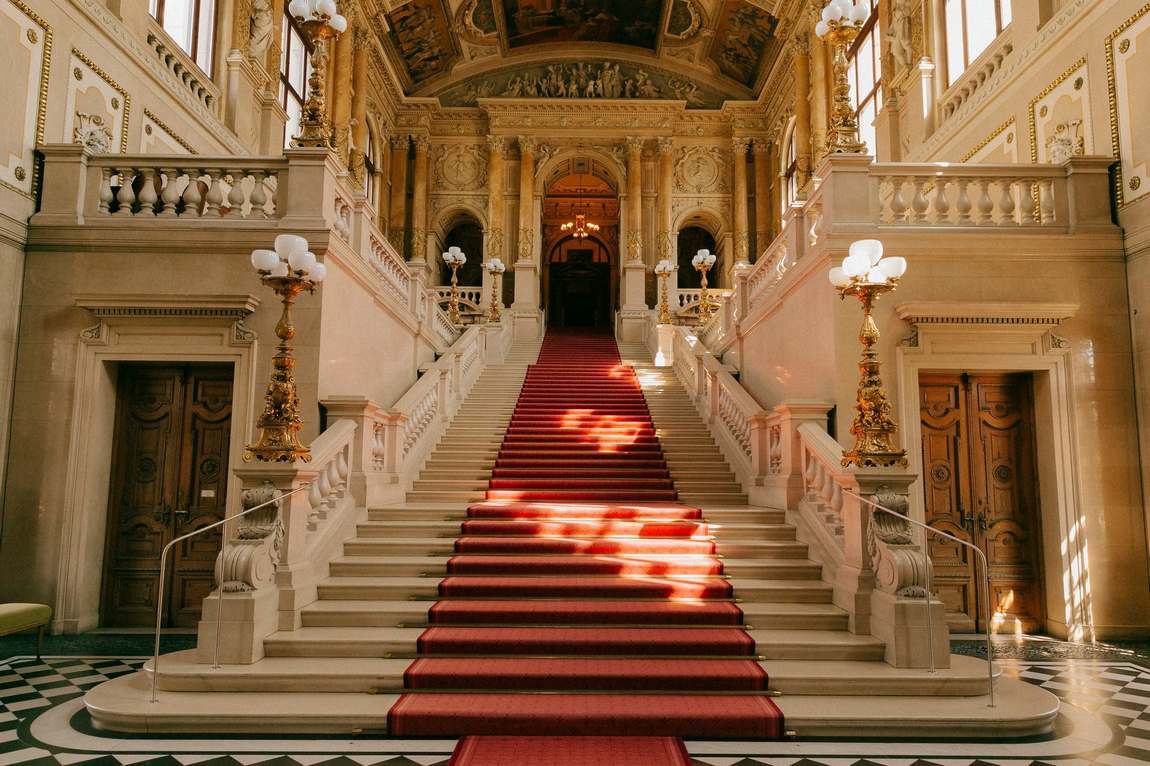
The interior is in the French Baroque style. The architecture is similar to that of the Semper Opera House in Dresden. The majestic façade is crowned by the figure of the Greek god Apollo, patron of the arts.
Immediately below is an elaborate bas-relief depicting the triumph of Bacchus and Ariadne, playing with the contrasts of light and shadow on a sunny day.
In the corridors and staircases are works by famous Austrian artists such as Gustav and Ernst Klimt and Franz Macz. They add refinement to the interiors and reflect the motifs typical of the period.
The elegant staircases, huge crystal chandeliers and expensive materials used in the interior are striking. The understated velvets and shimmering gilding are reminiscent of the luxury of palaces, or at least the vaults of Parliament.
In the painting of the entrance, on the side where the Landtmann Café is located, Gustav Klimt depicted an ancient theatre in the style of the Greco-Roman Taormina, which is still in use today. One of the staircases is painted with images of the famous Globe Theatre in London and the final scene of Shakespeare's Romeo and Juliet.
The modern auditorium seats 1,340 people. There are more than 1,000 performances each year, and even the gala concert at the Vienna Burgtheater is not difficult to attend if tickets are booked in advance.
Of course, you can watch the magical and powerful performances online, but nothing compares to the energy that pervades all concerts at the Theater National Wien. The orchestra has a capacity of 70 musicians — you can imagine the sound and acoustics of the productions. The revolving stage has a diameter of 21 metres.
And another curious fact: the stage is separated from the hall by a heavy iron curtain (the construction weighs about 16 tonnes). This system is able to separate the stage from the auditorium in less than half a minute! In other words, in a matter of seconds.
Guided tours are available during the theatre season. And it should be noted that going behind the scenes, experiencing the atmosphere from the inside, visiting the place where actors and opera singers prepare for their performances will be of interest to both children and adults.


